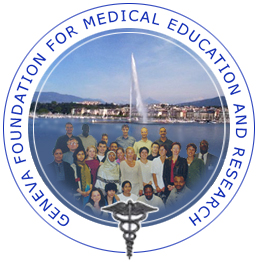Evaluation of In Vitro Antiprotozoal and Cytotoxic Activities of Selected Medicinal Plants used in Nigerian Folk Medicine
doi.org/10.26538/tjnpr/v5i4.2
Keywords:
Antitrypanosomal, Antiplasmodial, Antileishmanial, Cytotoxicity, Folk medicineAbstract
The global burdens of trypanosomiasis, malaria and leishmaniasis have continued to impoverish the developing countries. These protozoan parasitic diseases are still endemic in sub-Saharan Africa; and drug resistance and toxicities have further aggravated this situation. The aim of the study is to validate some folkloric claims on the uses of the selected plants in ethnomedicine in Nigeria. The study selected eight plants based on their use in the management of parasitic protozoan diseases and evaluated their antiprotozoal as well as cytotoxic activities. The methanol extracts of the plants were tested for in-vitro activities against Trypanosoma brucei rhodesiense (Tbr), Trypanosoma cruzi (Tcr), Leishmania donovani (Ldon) and Plasmodium falciparium as well as mammalian skeletal L6 myoblast for cytotoxicity. The results showed moderate to low in-vitro antiprotozoal and cytotoxic activities. Aspilia africana (IC50 8.15 μg/mL) and Caesalpinia pulcherrima (IC50, 3.98 μg/mL) showed significant in-vitro anti-Tbr activity with selectivity indices of 6 and 9.7 respectively. C. pulcherrima (IC50: 12.14 μg/mL, Ldon; 14.0, Pfc), Dissotis rontundifolia (IC50: 18.45 μg/mL, Tbr), Ficus glumosa flower (IC50: 16.05 μg/mL, Tbr), Morinda morindiodes (IC50: 13.46 μg/mL, Tbr), Senna alata (IC50: 10.51μg/mL, Tbr; 18.07 μg/mL, Ldon) and Sphenocentrum jollyannum (IC50: 11.53 μgmL, Tbr; 18.30 μg/mL, Ldon; 13.26 μg/mL, Pfc) showed moderate activities. Further separation of C. pulcherrima extract resulted in improved antileishmanial (IC50, SI: 4.57 μg/mL, 4.6) and antiplasmodial (IC50, SI: 3.80 μg/mL, 5.6) activities. This study has shown that some plants used in folk medicine in Nigeria could be potential sources of lead compounds for parasitic infection.
References
Koparde AA, Doijad RC, Magdum CS. Natural products in drug discovery. Pharmacognosy-medicinal plants, IntechOpen. 2019; 1-20pp. Available from: https://www.intechopen.com/books/pharmacognosymedicinal-plants/natural-products-in-drug-discovery.
Tugume P and Nyakoojo C. Ethno-pharmacological survey of herbal remedies used in the treatment of paediatric diseases in Buhunga parish, Rukungiri District, Uganda. BMC Compl Altern Med. 2019; 19:353.
Zamawe C, King C, Jennings HM, Mandiwa C, Fottrell E. Effectiveness and safety of herbal medicines for induction of labour: a systematic review and meta-analysis. BMJ open. 2018; 8(10):e022499.
Okello D, Jun L, Youngmin K. Ethnopharmacological Potential of Aspilia africana for the Treatment of Inflammatory Diseases. Evid-Based Compl Altern Med. 2020; (2020).
Christian AG, Mfon AG, Dick EA, David-Oku E, Linus AJ, Chukwuma EB. Antimalarial potency of the leaf extract of Aspilia africana (Pers.) CD Adams. Asian Pac J Trop Med. 2012; 5(2):126-129.
Essien AD, Essiet GA, Akuodor GC, Akpan JL, Chilaka KC, Bassey AL, Ezeokpo BC, Nwobodo NN. Pharmacological evaluation of the aqueous stem bark extract of Bombax buonopozense in the relief of pain and fever. Afr J Pharm Pharmacol. 2016; 10(5):59-65.
Akuodor GC, Mbah CC, Megwas UA, Ikoro NC, Akpan JL, Okwuosa BO, Osunkwo UA. In vivo antimalarial activity of methanol leaf extract of Bombax buonopozensein mice infected with Plasmodium berghei. Int J Biol Chem Sci. 2011; 5(5):1790-1796.
Jing W, Zhang X, Zhou H, Wang Y, Yang M, Long L, Gao H. Naturally occurring cassane diterpenoids (CAs) of Caesalpinia: A systematic review of its biosynthesis, chemistry and pharmacology. Fitoter. 2019; 134:226-249.
Gilani SMU, Ahmed S, Baig SG, Hasan MM. Ethnopharmacognosy, phytochemistry and pharmacology of genus Caesalpinia: A review. J Pharmacog Phytochem. 2019; 8(4):2222-2229.
Mann A, Egwim EC, Banji B, Abdukadir NU, Gbate M, Ekanem JT. Efficacy of Dissotis rotundifolia on Trypanosoma brucei brucei infection in rats. Afr J Biochem Res. 2009; 3(1):5-8.
Darkwah WK, Ao Y, Adinortey MB, Weremfo A, Abrokwah FK,. Afriyie E. Total phenolic, flavonoid and alkaloid contents, oxidative DNA damage protective and antioxidant properties of methanol and aqueous extracts of Dissotis rotundifolia whole plant. Free Rad Antioxid. 2018; 8(2):82-88.
Abubakar K, Yunus AT, Abubakar MR, Ugwah-Oguejiofor JC, Muhammad AA. Antioxidant and antikindling effect of Tapinanthus globiferus growing on Ficus glumosa in pentylenetetrazole induced kindled rats. Afr J Biotechnol. 2018; 17(4):73-80.
van Staden AB and Lall N. Ficus glumosa. In Underexplored Medicinal Plants from Sub-Saharan Africa, Academic Press. 2020; 127-132p.
Soniran OT, Idowu OA, Idowu AB, Ajana OO. Evaluation of in vivo antiplasmodial activities of extracts of Morinda morindiodes (Bak.) in the treatment of malaria. Int JBiomed Health Sci. 2011; 7(4):299-306.
Olukunle JO, Abatan MO, Soniran OT, Takeet ML, Akande FA, Biobaku KT, Jacobs EB. In vivo antitrypanosomal evaluation of some medicinal plant extracts from Ogun State, Nigeria. Sci World J. 2010; 5(1):17-19.
Idowu OA, Babalola AS, Adenubi OT, Olukunle JO. Antiplasmodial activities of combined extracts of Morinda morindiodes, Morinda lucida and Vernonia amygdalina in Plasmodium berghei infected mice. Zoologist. 2014; 11:40-45.
Wuthi-udomlert M, Kupittayanant P, Gritsanapan W. In vitro evaluation of antifungal activity of anthraquinone derivatives of Senna alata. J Health Res. 2010; 24(3):117-122.
Okpuzor J, Ogbunugafor H, Kareem GK, Igwo-Ezikpe MN. In vitro investigation of antioxidant phenolic compounds in extracts of Senna alata. Res J Phytochem. 2009; 3(4):68-76.
Olorunnisola OS and Afolayan AJ. In vivo anti-malaria activity of methanolic leaf and root extracts of Sphenocentrum jollyanum Pierre. Afr J Pharm Pharmacol. 2011; 5(14):1669-1673.
Olorunnisola OS, Fadahunsi OS, Adegbola P. A Review on Ethno-Medicinal and Pharmacological Activities of Sphenocentrum jollyanum Pierre. Med. 2017; 4(3):50.
Nnadi CO, Nwodo NJ, Kaiser M, Brun R, Schmidt TJ. Steroid alkaloids from Holarrhena africana with strong
activity against Trypanosoma brucei rhodesiense. Molecules. 2017; 22:1129.
Nnadi CO, Ebiloma GU, Black JA, Nwodo NJ, Lemgruber L, Schmidt TJ, de Koning HP. Potent antitrypanosomal activities of 3-aminosteroids against African trypanosomes: Investigation of cellular effects and of cross-resistance with existing drugs. Molecules 2019; 24(1):268.
Ma G, Sun Z, Sun Z, Yuan J, Wei H, Yang J, Wu H, Xu X. Antimalarial diterpene alkaloids from the seeds of
Caesalpinia minax. Fitoter. 2014; 95:234-239.
Erharuyi O, Adhikari A, Falodun A, Jabeen A, Imad R, Ammad M, Choudhary MI, Gören N. Cytotoxic, anti-inflammatory, and leishmanicidal activities of diterpenes isolated from the roots of Caesalpinia pulcherrima. Planta Med. 2017; 83(01/02):104-110.
Published
How to Cite
Issue
Section
License

This work is licensed under a Creative Commons Attribution-NonCommercial-NoDerivatives 4.0 International License.

















